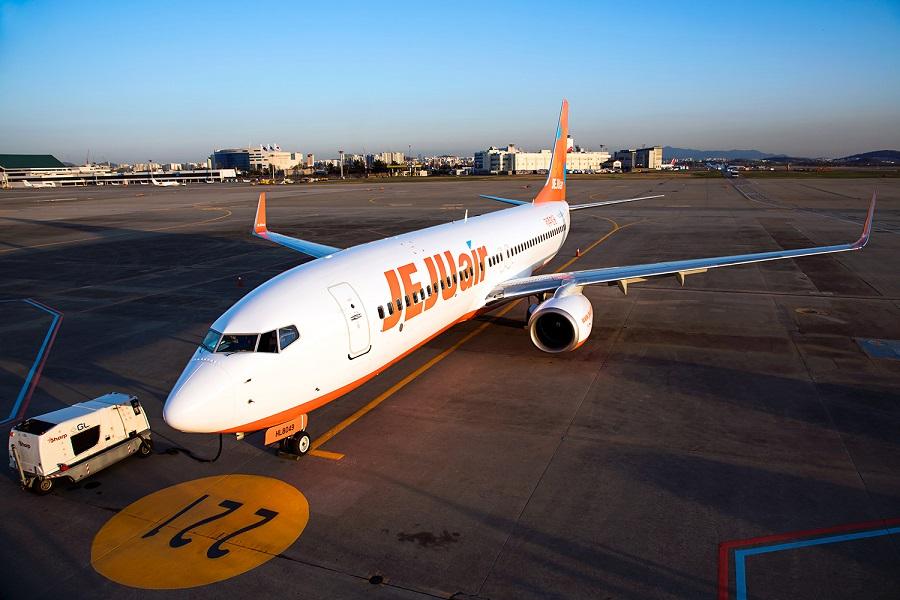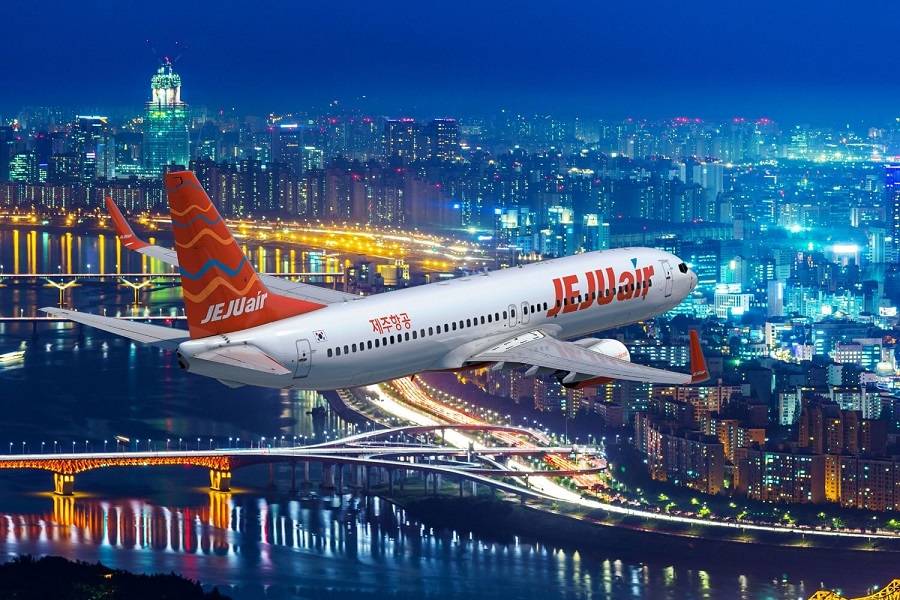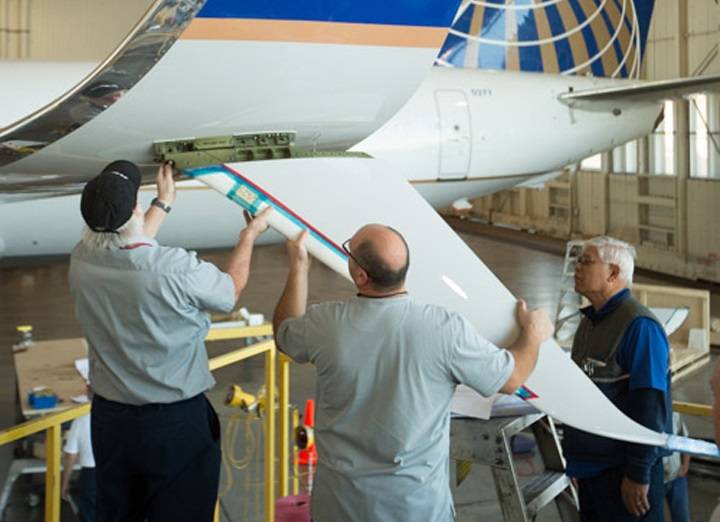A JEJU Air 737 trying to land in Busan, South Korea, had a wing tip strike. The crew landed after a go-around but didn’t see the damage. So the aircraft took off for another scheduled flight, as normal.
The incident happened last Wednesday. JEJU Air’s Boeing 737-800 was performing flight 7C-264 from Seoul Gimpo (RKSS) to Gimhae International Airport (RKPK) in Busan. As the aircraft was about to touch down on runway 36L, it unexpectedly rolled to the left. The cause for the sudden roll is unknown. There was a right crosswind component of around 10kts at the time.

The crew went around, climbing to 5,000 feet and made another approach and an uneventful landing on the same runway. The aircraft spent approximately 90 minutes on the ground. The flight crew did not notice any damage to the aircraft. According to South Korea’s Ministry of Transport, JEJU Air maintenance did not spot the damage to the 737’s left wingtip.
Cleared for flight, the aircraft then departed for the next sector, flight 7C-265, back to Seoul. This was a 44-minute flight. Ground crews noticed the damage there. And as of this writing, the JEJU Air 737 is still on the ground, six days later. South Korea’s ARAIB (Accident Investigation Board) has opened an investigation on the incident. There is no mention of any inspection on the runway, in the incident’s immediate aftermath.

JEJU Air And An Unusual (?) 737 Winglet
It seems quite extraordinary that both the crew and ground personnel would miss such damage. But a closer look at the aircraft could help explain it. This is a Boeing 737-800, with registration HL8322, MSN 34690. It is just over 14 years old. It started its career with TUIfly in 2007. And while it technically changed some owners, it stayed within the Thomson/TUI group, until 2019. The 737 joined JEJU Air on February that year.

During some of the changes between TUI operators, the aircraft had to change paint schemes. In one of those changes (from Sunwing in Canada to Thomson), it got a new trick up its sleeve. Along with other 737s in TUI colors, it got split scimitar winglets. The 737 still had them as it joined JEJU Air. These look a bit like the split-tip winglets on a Boeing 737 MAX. But they are not the same.
The split scimitar winglets are essentially a modification of the original, blended 737NG winglets. This involves adding a downward fin and extending/reprofiling the rear tip of the existing winglet. Boeing claims an additional 2-3% fuel saving from these winglets. Operators like United, Alaska and many others have adopted them, as a retrofit. Some of the last 737NGs out of Renton have them from the factory. And obviously JEJU Air had no reason to remove them from its 737.

JEJU Air’s other 737 aircraft don’t have these winglets. The airline has a total of 43 737-800s, with an average age of 12 years. So it seems plausible that, at first glance, a missing element of the scimitar might go unnoticed. The airline also has orders for 40 Boeing 737 MAX 8 aircraft.
Source: AvHerald
For a possible positive (!) use of wing-tip vortices, and a great Mentour video explaining winglets, go here.



